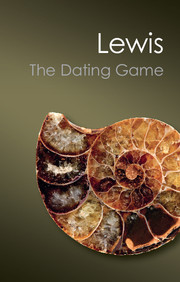Book contents
- Frontmatter
- Contents
- List of Illustrations
- Prelude to the Game
- A Brief History of Time
- Darwin's Sorest Trouble
- Mysterious Rays
- Doomsday Postponed
- Holidays in Mozambique
- This Vegetable Prison
- A Brimful of Promise
- Liquid Gold in Yenangyaung
- Durham Days
- The Ardnamurchan Affair
- Rewards and Retributions
- Why does the Sun Shine?
- The Age of Uranium
- The Age of the Earth
- Loose Ends
- Thanks and Acknowledgements
- Selected Bibliography
- Index
A Brief History of Time
Published online by Cambridge University Press: 05 February 2014
- Frontmatter
- Contents
- List of Illustrations
- Prelude to the Game
- A Brief History of Time
- Darwin's Sorest Trouble
- Mysterious Rays
- Doomsday Postponed
- Holidays in Mozambique
- This Vegetable Prison
- A Brimful of Promise
- Liquid Gold in Yenangyaung
- Durham Days
- The Ardnamurchan Affair
- Rewards and Retributions
- Why does the Sun Shine?
- The Age of Uranium
- The Age of the Earth
- Loose Ends
- Thanks and Acknowledgements
- Selected Bibliography
- Index
Summary
The age of the Earth has been one of the most controversial numbers in science since the 17th century.
Stephen BrushPrimrose Hill in Gateshead was a modest street of single-bay Victorian brick houses, terraced in tiers down the steep hill of Low Fell. If you stood in the middle of the road the view below was of green fields and a large sky, despite the town's location in the industrial heartland of northern England, but the houses were sideways on to this view and austerely faced each other across the road, their front doors guarded from the street by three feet, the occasional hydrangea, and an iron railing. In January 1900, in the wintry dawn of a new century, Arthur Holmes was ten years old and living at number nineteen, the only child of staunchly Methodist parents. His father was a cabinet maker and worked as an assistant in an ironmonger's shop. Consequently they were of modest means.
Not far away was Gateshead Higher Grade School where Mr John Bidgood, the school's visionary headmaster, teacher of biology, and world expert on tropical orchids, made sure that provisions for the teaching of science were not exceeded by any other municipal school in the country. It was, for example, the first of those schools to have science laboratories specifically designed and fitted for that purpose. In 1901, the year that Queen Victoria died, shy and retiring young Arthur Holmes joined this exhilarating school environment, and blossomed.
- Type
- Chapter
- Information
- The Dating GameOne Man's Search for the Age of the Earth, pp. 7 - 26Publisher: Cambridge University PressPrint publication year: 2012



